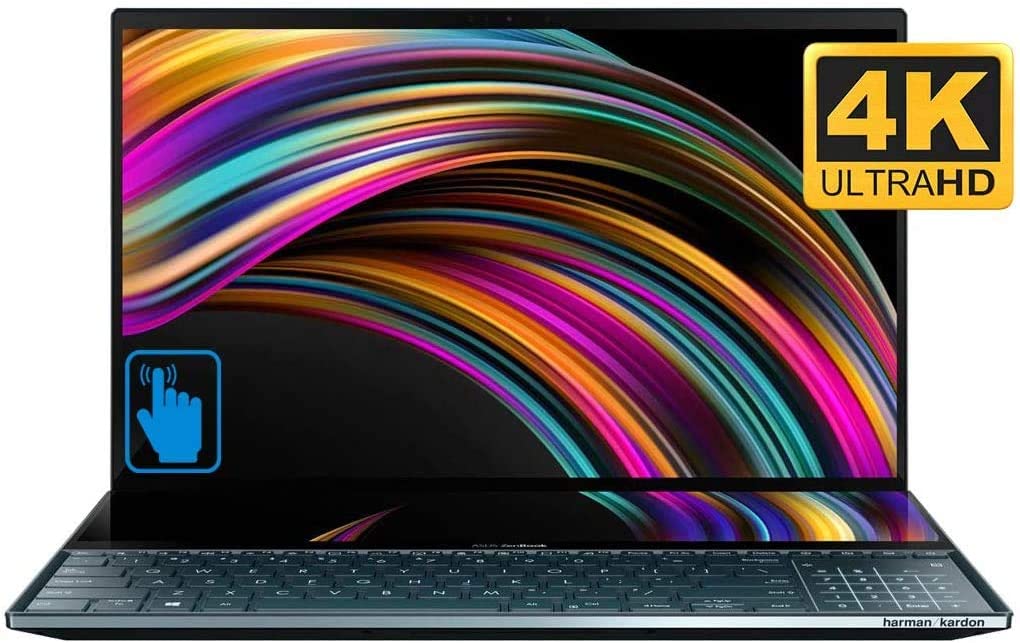Affiliate links on Android Authority may earn us a commission. Learn more.
I've been using a dual-screen laptop for months, and I don't want to go back
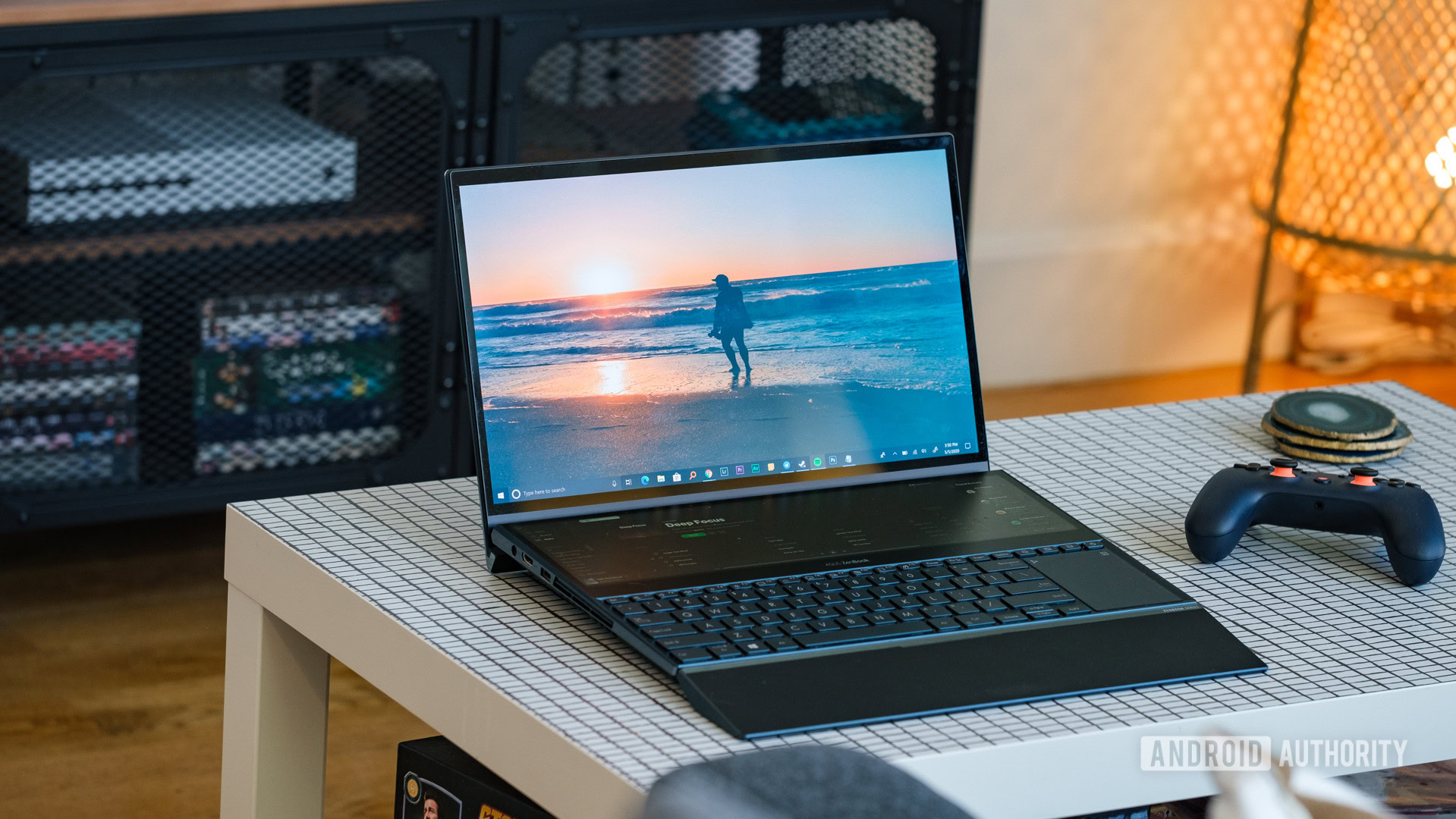
It was at Computex 2018 that I came in contact with the ASUS’ first dual-screen laptop, the Zenbook Pro — or as ASUS called it internally, Project Precog. At the time, I didn’t see a lot of value in the concept. ASUS doubled the trackpad as a display, complete with its own UI and an app launcher. The idea was to give users easy access to apps like Spotify or YouTube while working on the primary display.
I’d seen multi-screen laptop concepts before. Most notably, Razer’s Project Valerie, which opened up to reveal three separate 4K displays. While functional, Valerie was thick and appeared rather fragile. To make matters worse, the prototypes were stolen from under Razer’s nose at CES 2017, no doubt slowing down the development of the project.
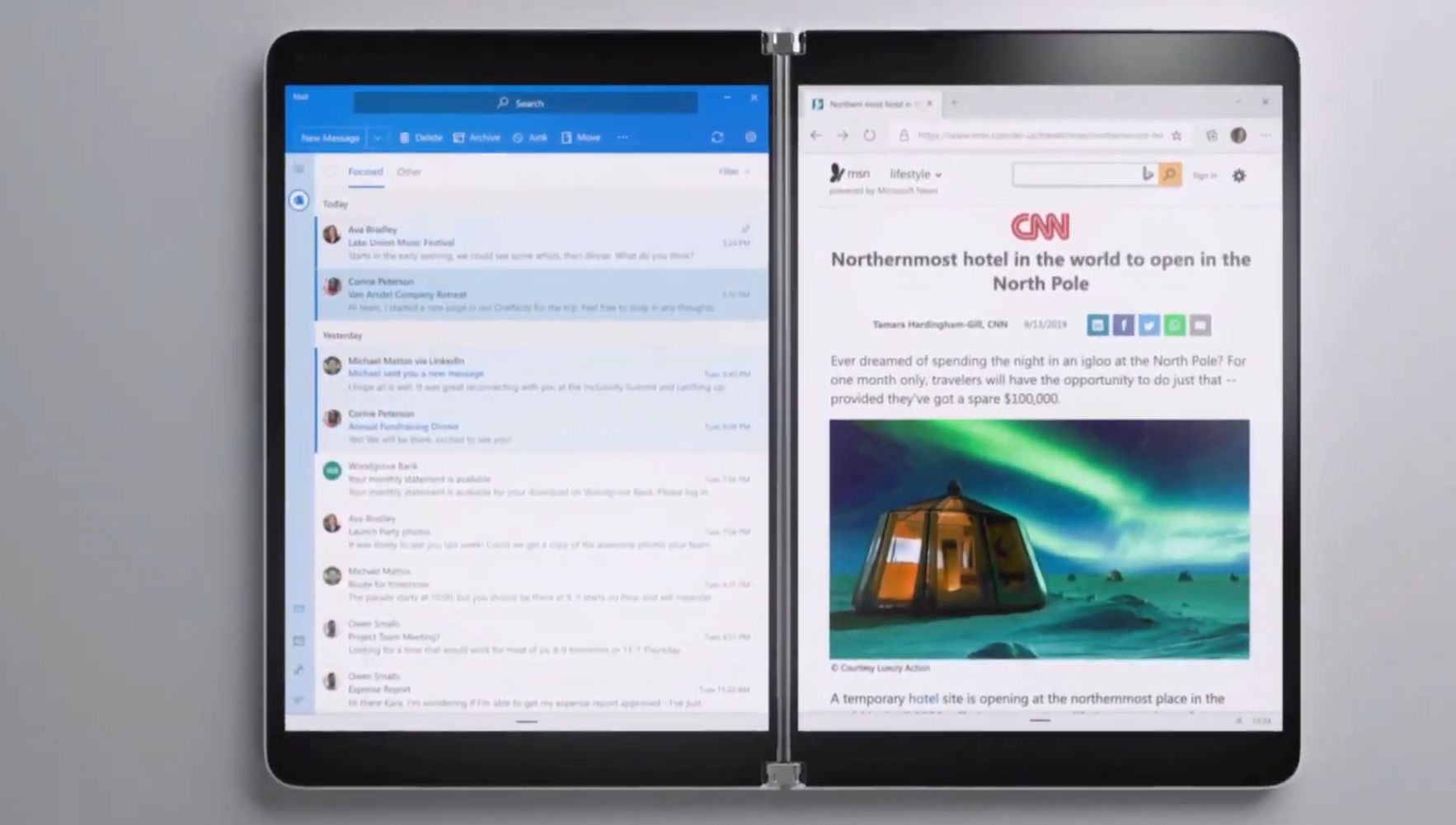
Fast forward to Computex 2019, and ASUS continued iterating on the Zenbook Pro concept. While I was caught up primarily covering more Android related topics like the Zenfone 6 and Qualcomm’s newest laptop chipset, Asus’ Zenbook Pro Duo made a big splash that was hard to ignore.
The Pro Duo is what can only be described as a beast of a laptop. With a 15.6-inch 4K OLED display, an Intel i9-9980HK processor, 32GB of RAM, and a NVIDIA RTX 2060 GPU, this laptop screams performance. And as is the case with most laptops, more performance means bigger, thicker, and heavier. The Pro Duo weighs in at 5.51 pounds, undoubtedly heavier than the common ultrabook.
But unlike most performance-heavy laptops, the Zenbook Pro Duo has something near no other laptop can tout. It has a second, 14-inch 4K display above the keyboard.
Big benefits
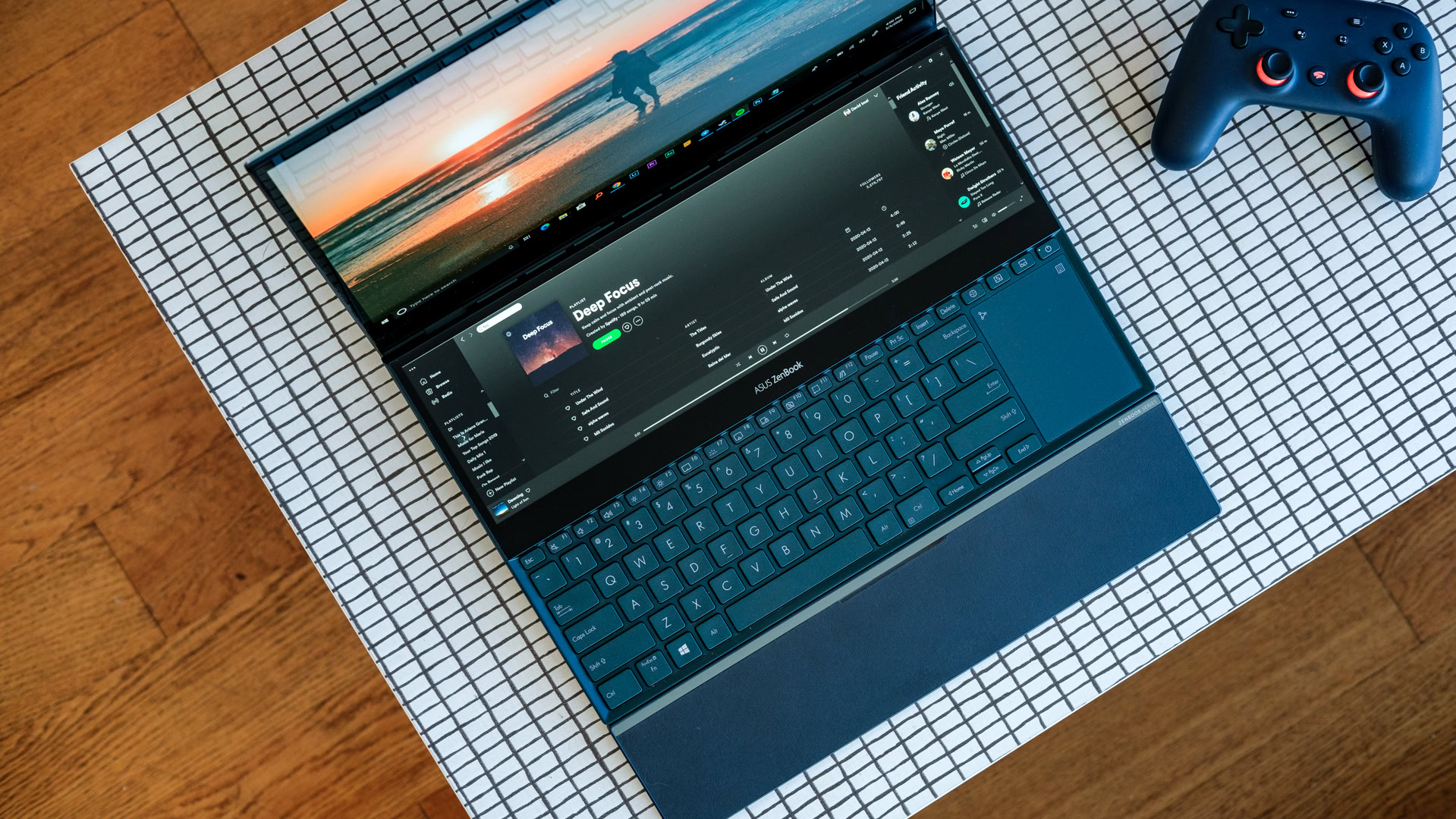
When I first went hands-on with this device, it was hard for me to see its value. This laptop is targeted at creatives, touting the second screen as a place for expanded context menus, timelines, etc. My first impression was that an extra screen would just cause me to get distracted, and wouldn’t help with focusing on the task at hand. But I felt like I needed to give this thing a go for an extended period before I could make a final verdict. And after spending a few months with this laptop, I am happy to report that I was dead wrong.
From creative work to gaming, to basic web browsing, I found the ScreenPad Plus second display to be incredibly useful. While I didn’t find myself using its dedicated UI hardly at all, the ability to drag and drop windows, apps, and UI elements to the second display made me feel like a multitasking god.
From a creative workflow perspective, the second display fared well in apps like Adobe Premiere Pro or Adobe Photoshop. In Premiere, I’d often move my timeline to the Screenpad Plus, using the primary display as a larger area to view playback and select effects. Premiere already has a very cramped UI, so being able to shift elements to a separate, dedicated screen helped a lot. It was also useful to drag my script to the bottom display next to my shot list, so I could quickly reference which shots I needed to drop into my timeline.
Photoshop was mostly the same way. While I mainly kept elements on the primary display, it was useful to have a folder of assets sitting on the Screenpad Plus, ready to be dragged into the project. ASUS also includes a pen with the intention that you’ll draw on the slightly angled second screen. I didn’t find this as useful, mostly because primary Photoshop elements are on the main, more wobbly screen.
The second screen is useful for more than just creative apps.
When gaming, it’s useful for me to keep Discord, Telegram, or Spotify on the second display for easy access. I often host listening parties with my friends while we play, allowing us to listen to music together. The second display gives me easy access to Spotify so I can switch songs without tabbing out of a game. And keeping Telegram pinned there allows me to message people back between deaths — something I’d normally have to do on my phone, much more slowly.
It’s equally useful for work and basic web browsing. Referencing specs sheets is great while writing, and playing a YouTube video on the bottom screen while browsing on the top has been killer while I’m just relaxing, probably researching film cameras.
The ScreenPad Plus is most useful for dedicated apps, or short snippets of information. This is probably the biggest reason why it didn’t distract me, rather, it added to my workflow. The Screenpad Plus feels like an extension of your main display versus a dedicated secondary monitor.
Weird quirks

Of course, putting an entire second display below the main display means the design of the laptop is quite different from traditional options. One of the most obvious being that the keyboard is much lower than it would normally be.
This is a bit of a double-edged sword. Because the laptop is relatively thick, ASUS was able to stick a fantastic keyboard on this laptop. It’s one of the best keyboards I have ever used on a laptop, with great travel and a good layout. But because it is at the bottom of the base, ASUS needed to include a wrist rest to make typing comfortable.
When on a desk, the keyboard and wrist rest combo feels fantastic. This is more comfortable than typing on a flat surface, and I recommend everyone get a wrist rest if they type a lot. It helps your wrists sit at a more comfortable angle and is better for your posture.
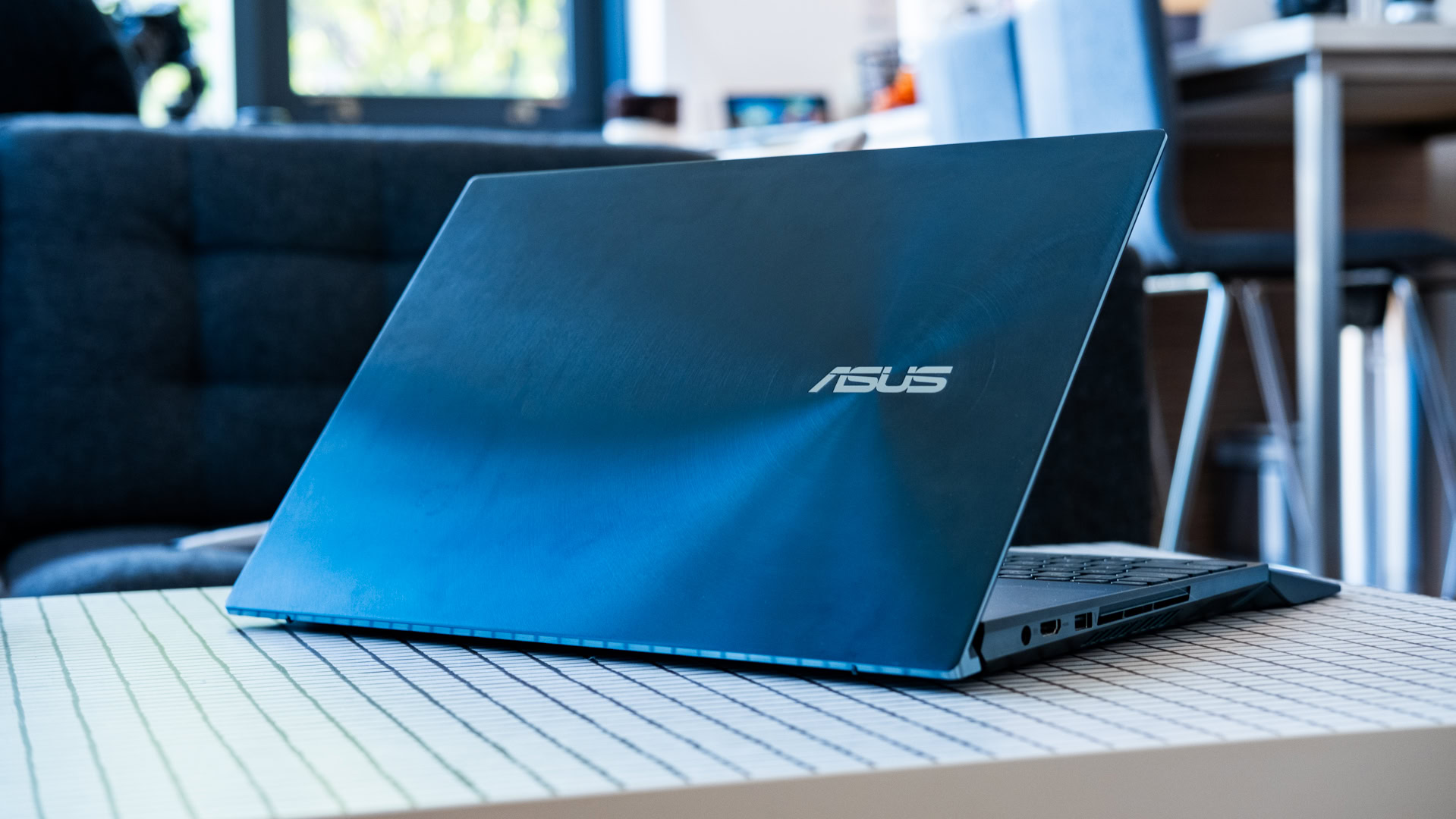
However, this laptop is very hard to use on your lap. Without the wrist rest, you’re left with a very awkward typing experience. I found myself picking at the keys far more than touch typing while using the computer on my lap, and I wish ASUS had included a way to magnetically attach the wrist rest. It merely slides into place currently, with nothing to hold it on uneven surfaces.
Because this laptop is so powerful, it needs some extra airflow to cool the components. Luckily, ASUS has developed a clever way to give it what it needs.
When you open the lid, the back of the lid lifts the base of the laptop ever so slightly. This gives the base a minor angle, which is great for typing. Just like with the wrist rest, this is better on your hands and gives the laptop the additional airflow it needs. Unfortunately, just like the keyboard, the sharp angle of the lid makes this uncomfortable to use on your lap.
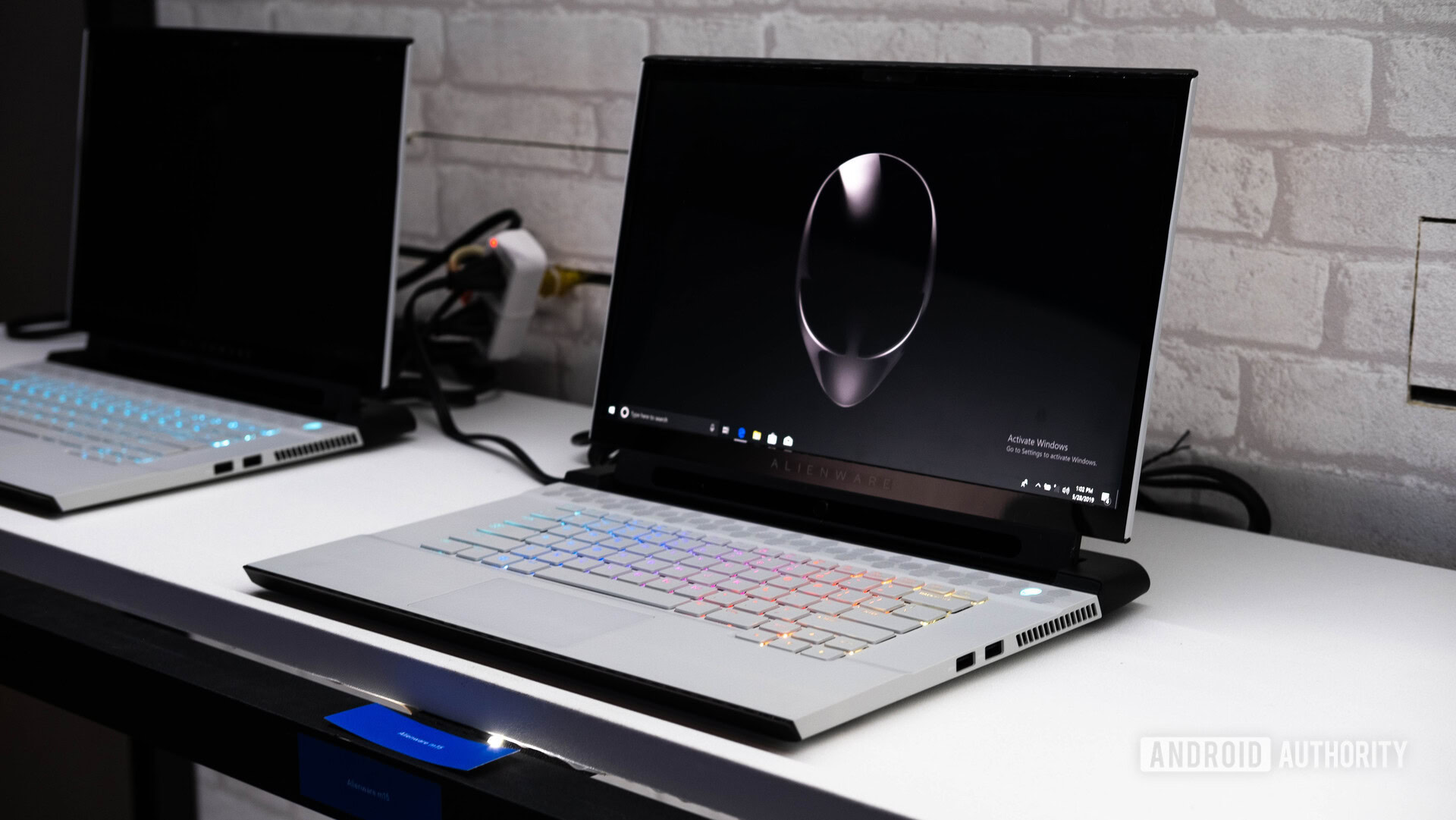
Overall, this is definitely a laptop that is best used on a desk. All of its weird quirks are negatives when spread out on your legs, but positives when used on a flat surface. If you have access to tables and surfaces often, this is great. But if you’re someone that works a lot on commutes or in strange locations, it might be better to look elsewhere.
I’m hooked
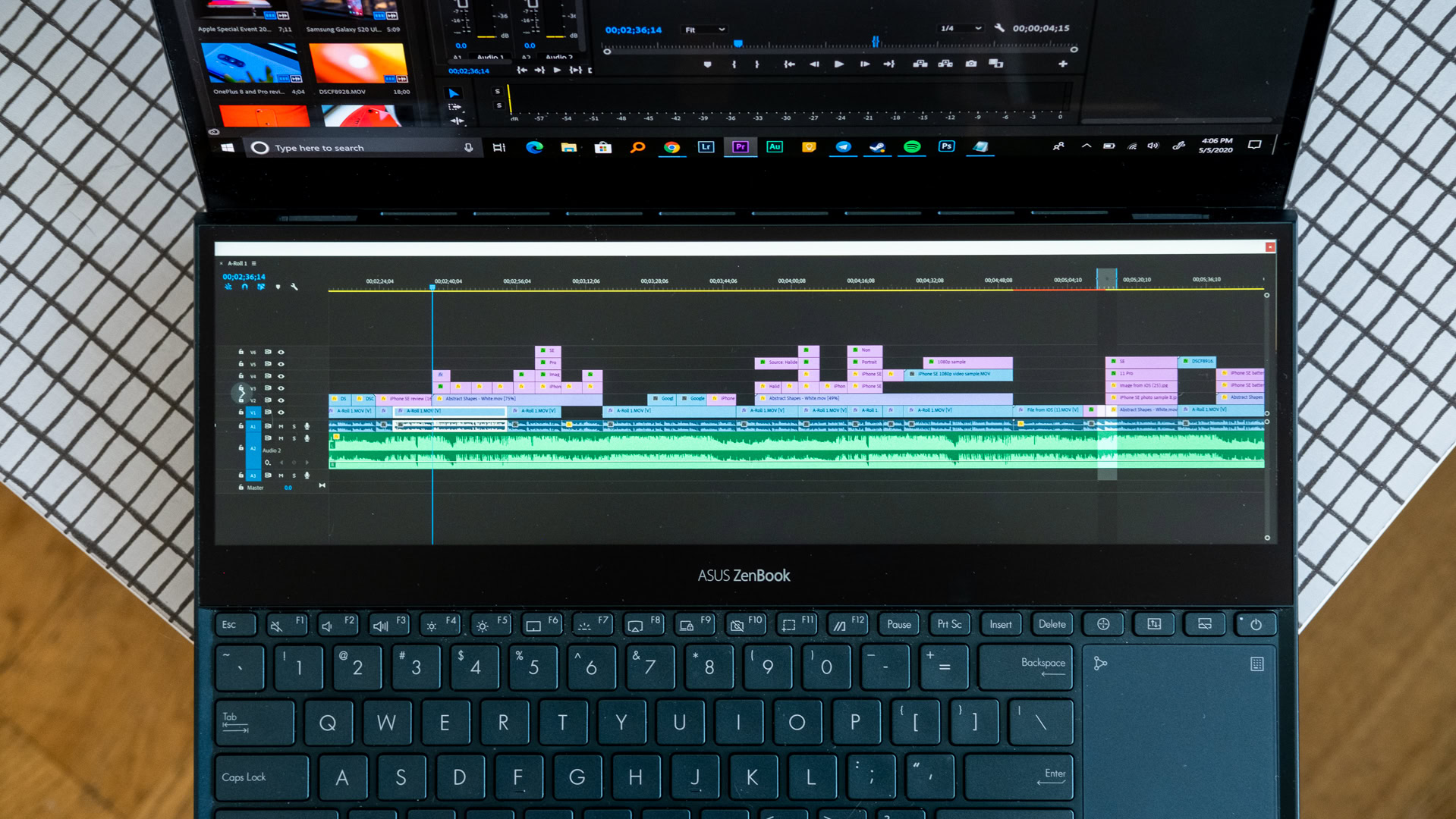
This laptop now resides primarily in my office/darkroom. This is where I work most of the time since I no longer visit my studio during the age of COVID-19. But it’s been sunny lately, and I’ll often want to work on the roof, so I’ve been grabbing my Surface Book 2 so I can keep the Zenbook Pro Duo plugged in.
As soon as I jumped back to the Surface Book, I felt like I was missing something. Don’t get me wrong, the keyboard on the Surface Book is great and the 3:2 aspect ratio display is fantastic for documents. But I was far more used to that second display than I thought I was, and I really, really missed it.
The ScreenPad Plus gives me such easy access to the apps and services I use often, and it made navigation of my laptop feel much more seamless. Multitasking on a single display feels much more tedious now, and I’m left thinking that dual-screen laptops are our best bet for effective multitasking on the go.
The future
Dual-screen devices have continued to pick up traction over the last year. ASUS has just announced a gaming version of the Zenbook Pro Duo called the ASUS ROG Zephyrus Duo. This laptop has a second display as well, but it tilts towards the user to give a better view without having to divert your eyes quite as much.
We’ve also seen Microsoft jump into the dual-screen space with both a dual-screen laptop and dual-screen phone. The Surface Neo and Surface Duo are more basic document writing productivity machines than creative application workhorses, but if they’re able to produce the same level of value as the Zenbook Pro Duo, they could be seriously good options.
Overall though, I’m happy to see some legitimate innovation in the laptop space. Even since laptops were created, the focus has been on how to make them thinner and lighter. Rarely does a manufacturer think more deeply about the human interface design. I used to miss having multiple monitors at my desk, but I love this solution.
